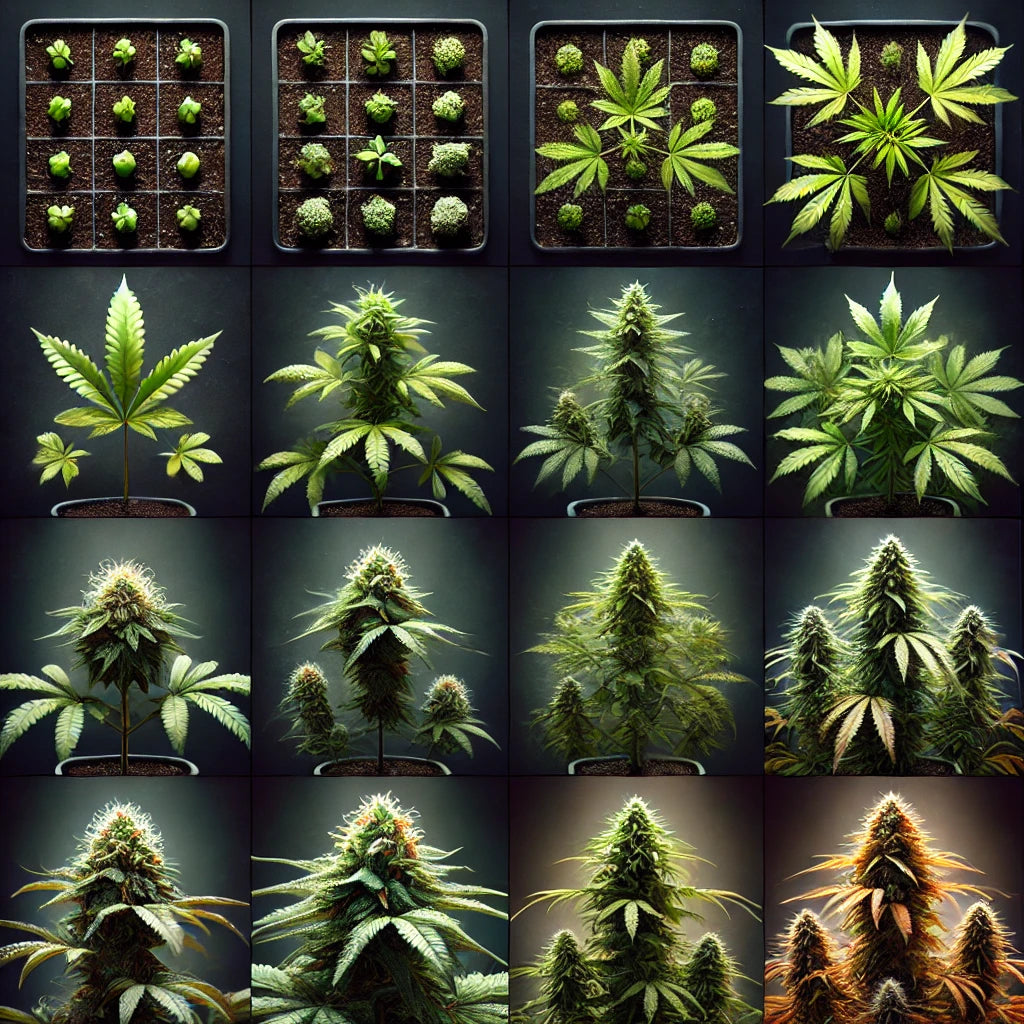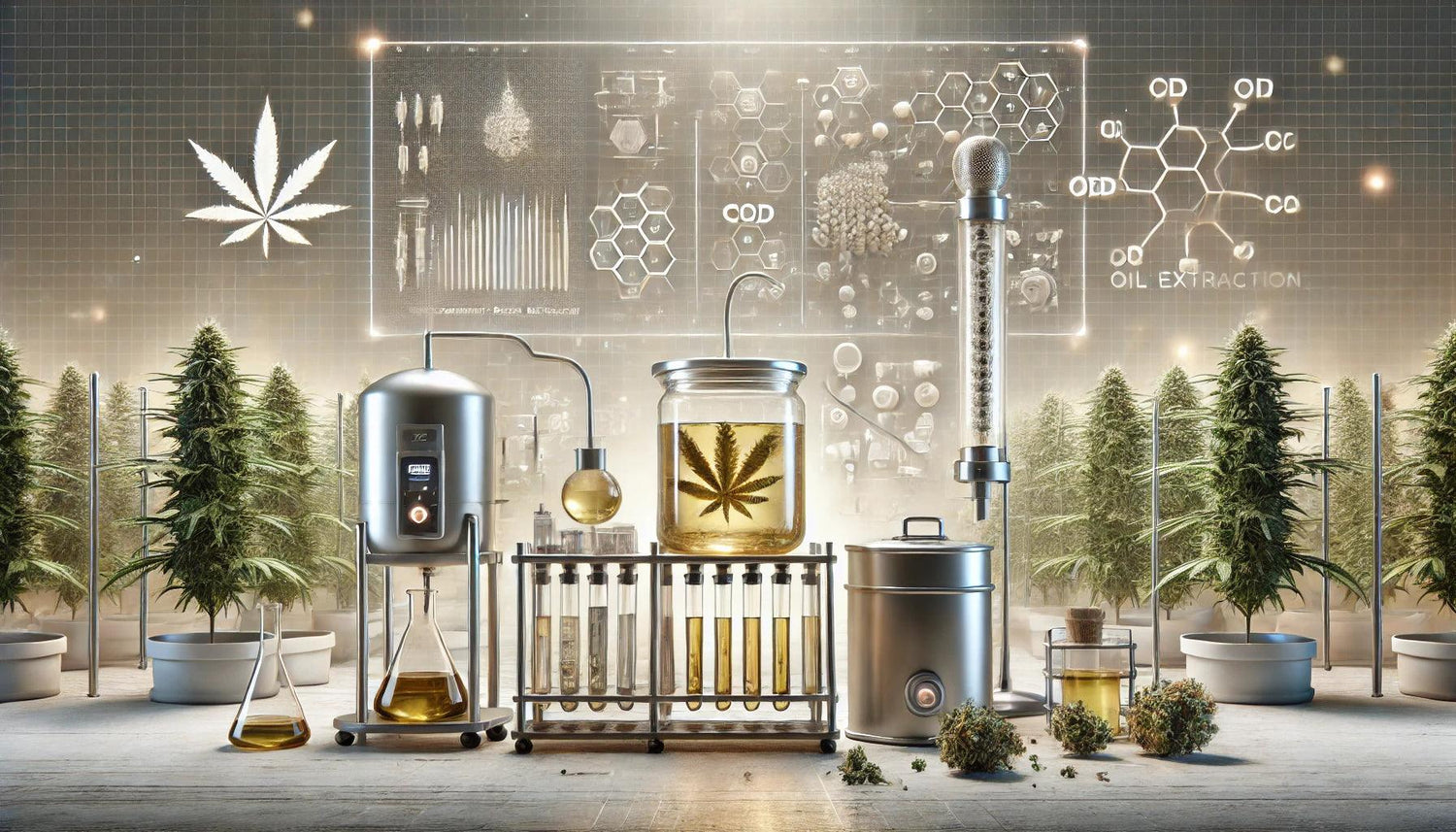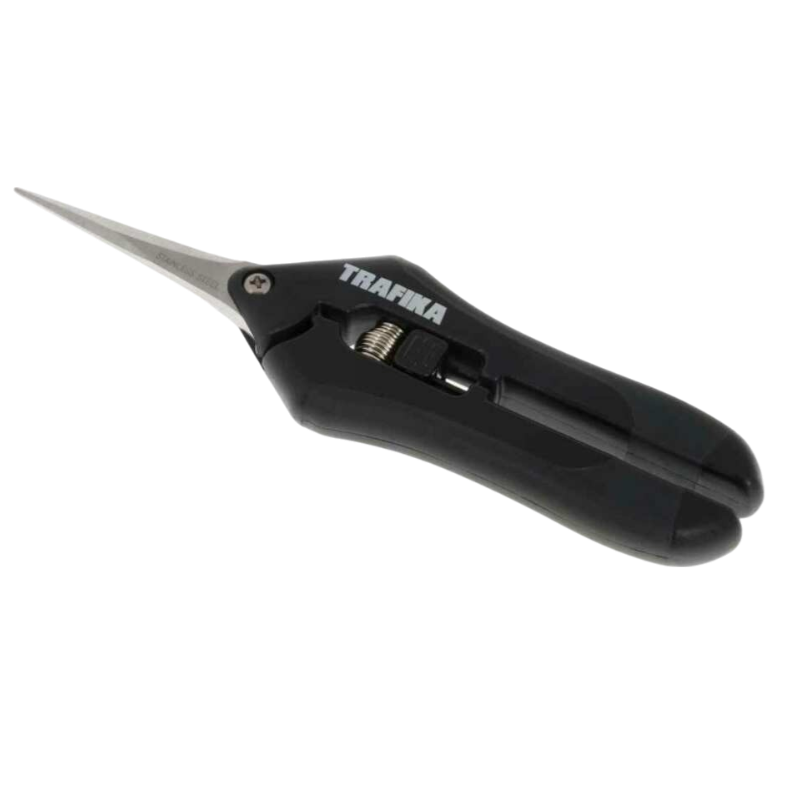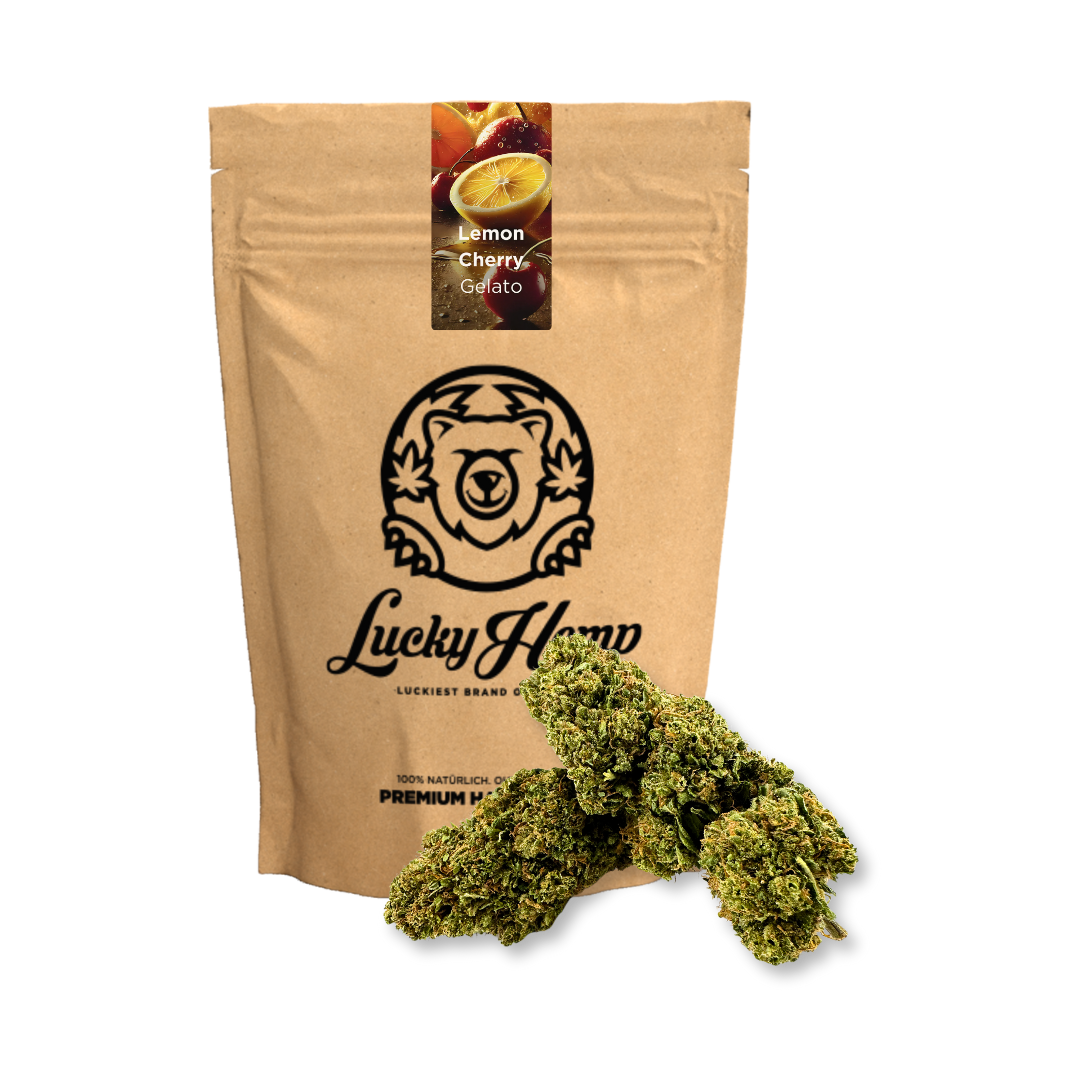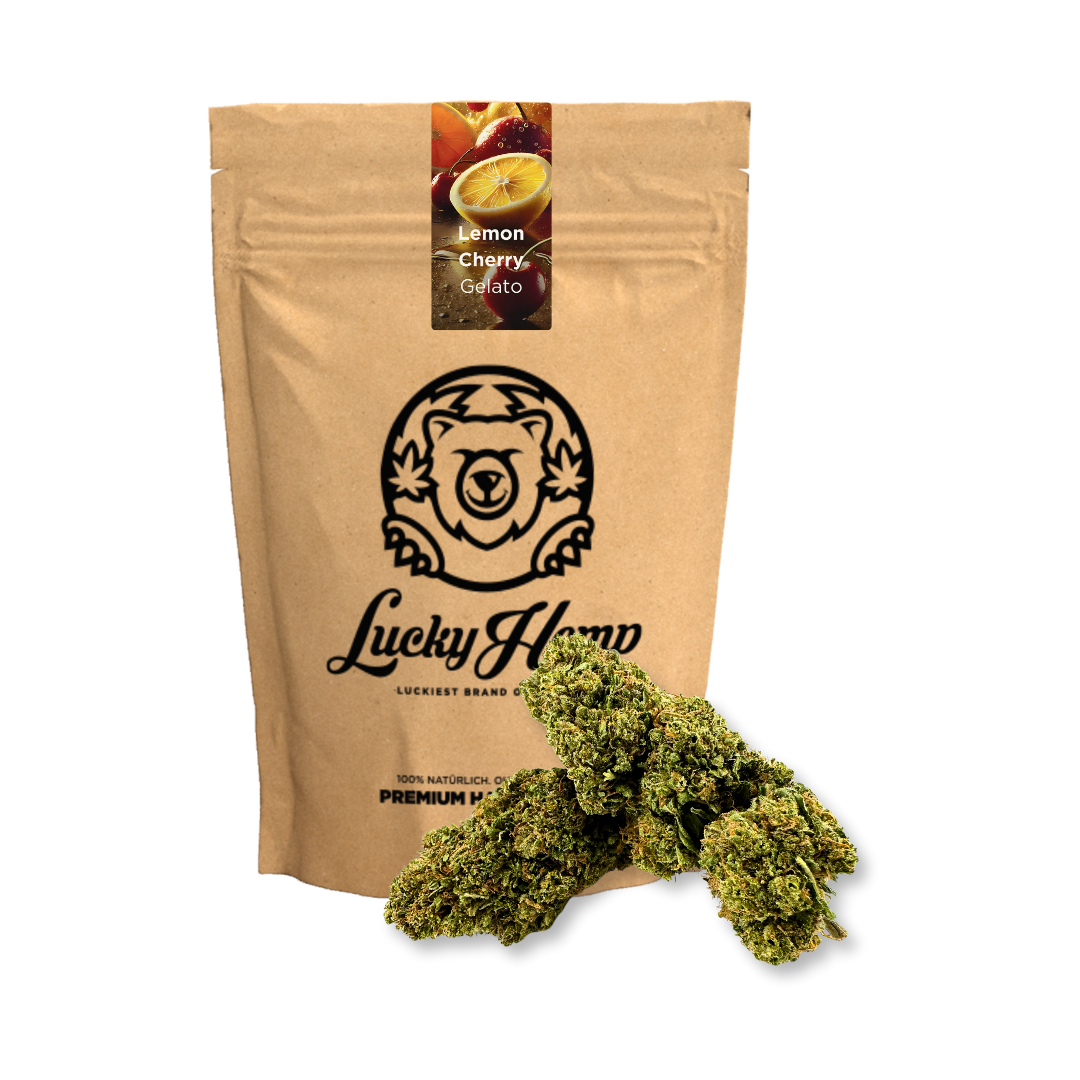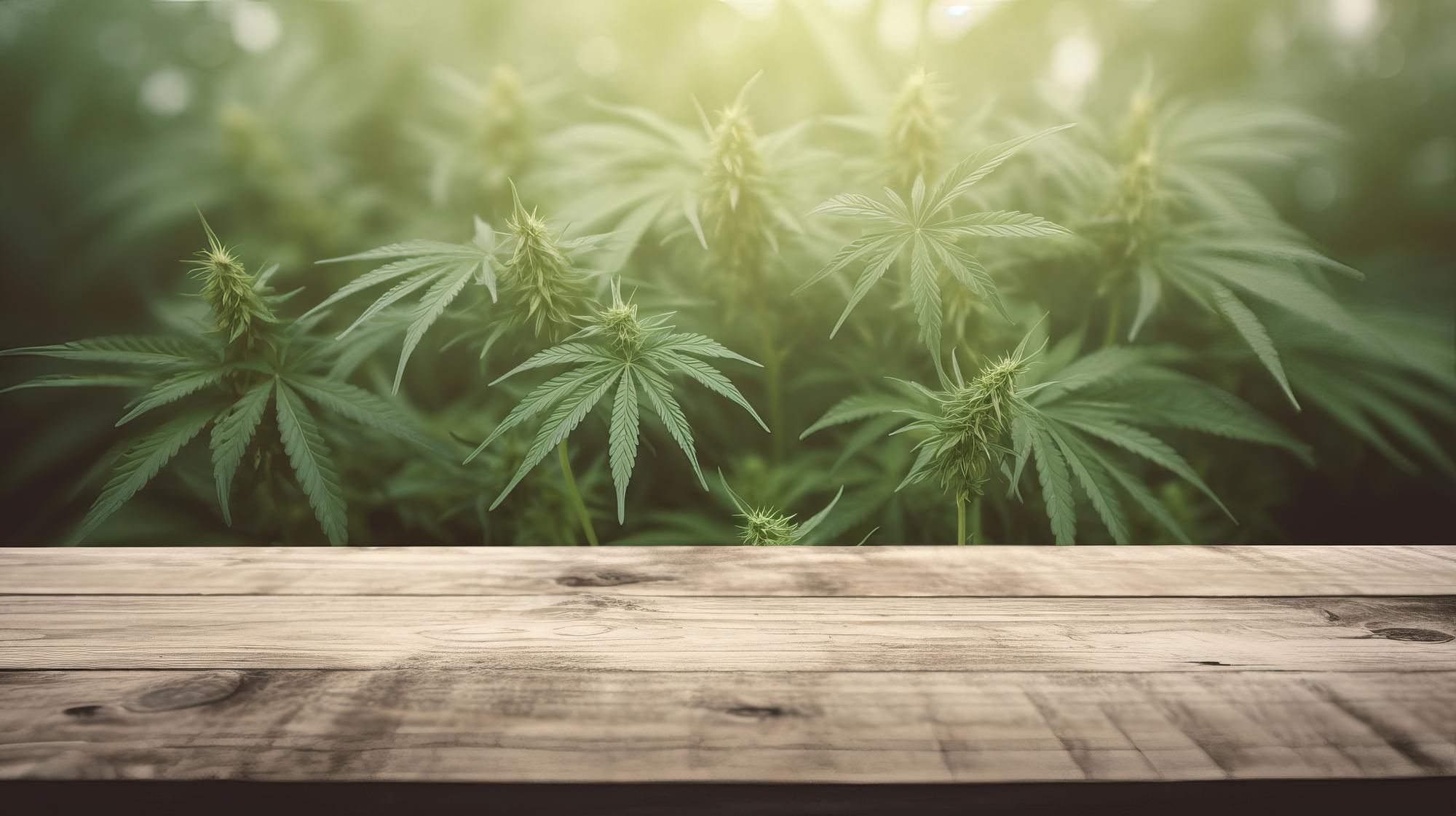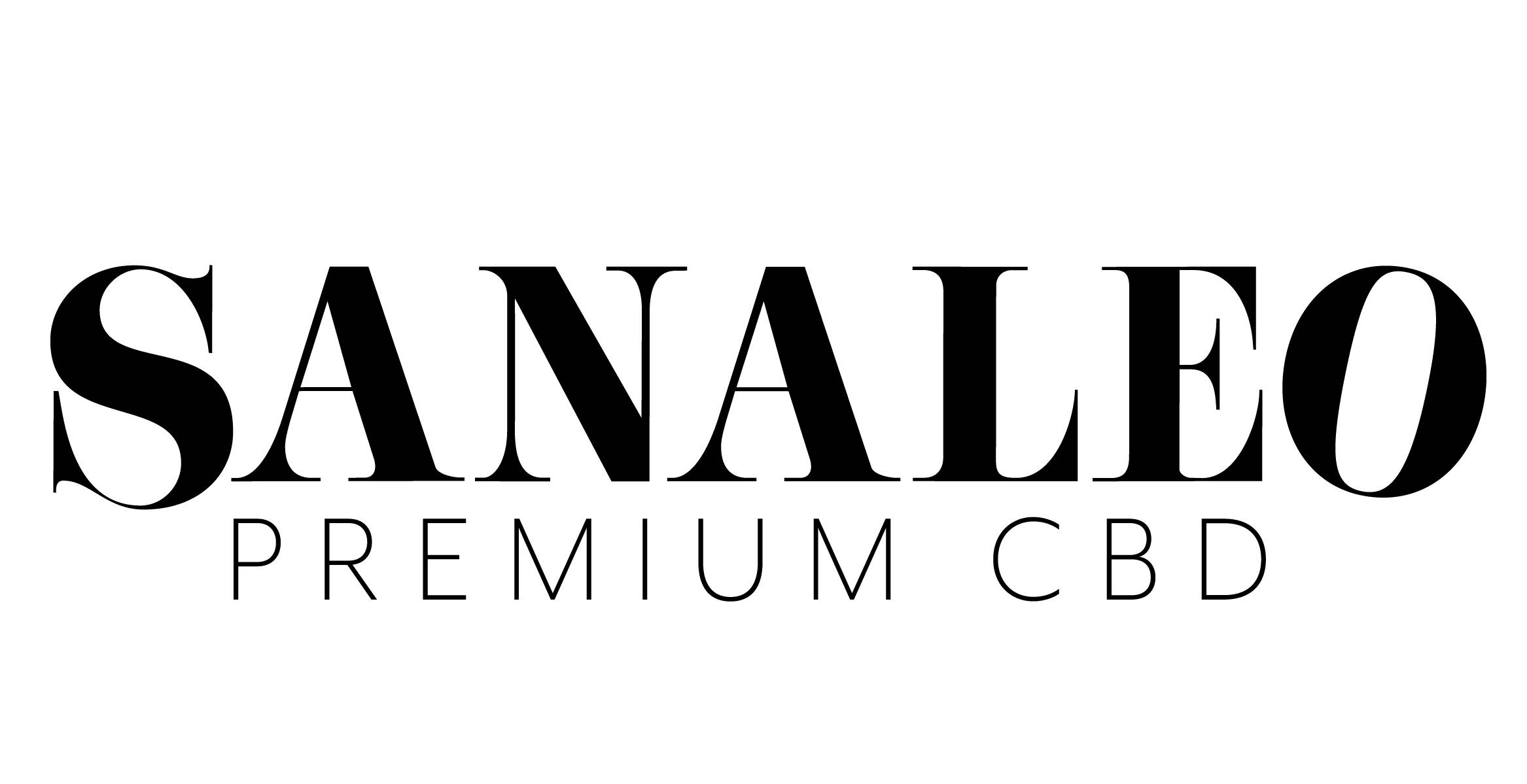1. The 5 most effective methods for CBD flower extraction at a glance
Extracting CBD from hemp flowers is a fascinating process that forms the basis for the diverse range of CBD products on the market. In this section, we'll take a look at the five most effective methods currently used in the industry. Each method has its own advantages and disadvantages, which we'll explain below.
CO2 extraction
CO2 extraction is considered the best way to extract CBD. It uses supercritical carbon dioxide to release the valuable cannabinoids from the hemp flowers. This method impresses with its purity and efficiency, but is also associated with higher costs.
Ethanol extraction
Another common method is ethanol extraction. This involves placing the CBD flowers in high-proof alcohol. This method is relatively inexpensive and easy to carry out, but can lead to contamination in the final product.
Oil extraction
Oil extraction is a traditional method that is particularly popular among home users. It involves heating the hemp flowers in a carrier oil such as olive oil or MCT oil. This method is simple and safe, but often produces a lower yield than other methods.
Butane extraction
Butane extraction is a highly efficient method that is mainly used in industrial production. It enables high yields, but also poses safety risks due to the use of highly flammable butane.
Ultrasonic extraction
One innovative method is ultrasound extraction. This uses sound waves to break down the cell walls of the hemp plant and release the cannabinoids. This method is still relatively new, but promises high efficiency with low energy consumption.
| Extraction method | Efficiency | Cost | purity |
|---|---|---|---|
| CO2 extraction | High | High | Very high |
| Ethanol extraction | Medium | Low | Medium |
| Oil extraction | Low | Very low | Medium |
| Butane extraction | High | Medium | High |
| Ultrasonic extraction | Medium-High | Medium | High |
Choosing the right extraction method depends on many factors, including the desired purity of the final product, available budget, and production volume. Each method has its strengths and weaknesses, and it's up to you to choose the method that best suits your needs.
2. CO2 extraction: The gold standard for high-quality CBD oils
CO2 extraction has established itself as the gold standard in the CBD industry. This innovative method uses the unique properties of carbon dioxide to extract CBD and other valuable cannabinoids from the hemp plants. Let's dive deeper and find out why this method is so popular.
How does CO2 extraction work?
CO2 extraction involves bringing carbon dioxide into a "supercritical" state under high pressure and low temperature. In this state, CO2 behaves like both a liquid and a gas. This unique property allows the CO2 to flow through the plant material and efficiently extract the desired compounds.
The process typically follows the following steps:
- The CO2 is pressurized and cooled until it reaches the supercritical state.
- The supercritical CO2 is passed through the hemp plants and releases the cannabinoids and terpenes.
- The CO2 enriched with cannabinoids is fed into a separator where the pressure changes.
- The cannabinoids precipitate and are collected while the CO2 is recycled.
Advantages of CO2 extraction
CO2 extraction offers numerous advantages that make it the preferred method of many CBD producers:
- High purity: The method produces a very pure extract without any solvent residues.
- Safety: CO2 is non-toxic and non-flammable, making the process safer than other methods.
- Efficiency: The method enables a high yield of CBD and other cannabinoids.
- Adaptability: By changing pressure and temperature, specific compounds can be extracted.
- Environmental friendliness: The CO2 used can be recycled and reused.
Challenges of CO2 extraction
Despite its advantages, CO2 extraction also brings with it some challenges:
High initial investment: The equipment needed for CO2 extraction is expensive, which often makes this method unaffordable for smaller producers. Complexity: The process requires specialized knowledge and experience to achieve optimal results.
| aspect | Evaluation |
|---|---|
| Purity of the final product | Very high |
| Efficiency | High |
| Initial costs | High |
| Environmental friendliness | High |
| complexity | High |
Despite the challenges, CO2 extraction remains the preferred method for producing high-quality CBD oils due to its superior results. If you are looking for a top-quality CBD product, make sure it was produced using CO2 extraction. This method guarantees you a pure, safe and effective product that is free of harmful residues.
3. Ethanol extraction: inexpensive, but with advantages and disadvantages
Ethanol extraction is a widely used method for extracting CBD from hemp plants. It is characterized by its simplicity and cost-effectiveness, but it also brings with it some challenges. Let's take a closer look at this extraction method.
The process of ethanol extraction
Ethanol extraction uses high-proof alcohol (ethanol) to extract the cannabinoids and terpenes from the hemp plants. The process typically goes like this:
- The hemp plants are doused with ethanol or immersed in it.
- The ethanol dissolves the cannabinoids and other plant compounds.
- The solution is filtered to remove plant residues.
- The ethanol is removed by evaporation, leaving behind a concentrated extract.
Advantages of ethanol extraction
Ethanol extraction offers several significant advantages:
- Cost-effectiveness: The method requires less expensive equipment than, for example, CO2 extraction.
- Simplicity: The process is relatively straightforward and can also be carried out by smaller producers.
- Efficiency: Ethanol is an effective solvent for cannabinoids and can lead to high yields.
- Full spectrum extraction: Ethanol extracts not only CBD, but also other cannabinoids and terpenes.
Disadvantages and challenges
Despite its advantages, ethanol extraction also brings with it some challenges:
Chlorophyll extraction: Ethanol also dissolves chlorophyll, which can lead to a bitter taste in the final product. Residue: There is a risk of leaving traces of ethanol in the final product if the evaporation process is not done carefully. Loss of terpenes: The high temperatures used to evaporate the ethanol can lead to the loss of volatile terpenes.
Quality control in ethanol extraction
To produce a high-quality CBD product using ethanol extraction, there are a few important steps to follow:
- Use of food-grade, high-purity ethanol
- Careful control of extraction temperature and duration
- Thorough filtering to remove plant residues
- Precise evaporation of ethanol under controlled conditions
- Comprehensive laboratory analyses of the final product for purity and residues
| aspect | Evaluation |
|---|---|
| Cost efficiency | High |
| Ease of implementation | Medium to High |
| Extraction of full-spectrum cannabinoids | High |
| Risk of contamination | Medium |
| Preservation of terpenes | Medium |
Ethanol extraction remains a popular method in the CBD industry, especially for smaller and medium-sized producers. If you buy a CBD product made using ethanol extraction, look for quality certificates and laboratory analyses. A reputable manufacturer will be transparent about their extraction process and quality control. With the right care, ethanol extraction can deliver high-quality CBD products - often at a more attractive price than CO2-extracted alternatives.
4. Oil extraction: The traditional method for home use
Oil extraction is one of the oldest and easiest methods of extracting CBD from hemp plants. It is especially popular among home users because it can be done with simple tools. Let's take a closer look at this traditional extraction method.
The process of oil extraction
Oil extraction involves heating the CBD-rich hemp flowers in a carrier oil. This process, also known as infusion, typically goes like this:
- The hemp flowers are crushed and placed in a heat-resistant container.
- A carrier oil, usually olive oil or MCT oil, is added.
- The mixture is heated for several hours, often in a water bath or slow cooker.
- After heating, the oil is filtered to remove plant residues.
- The resulting CBD-rich oil can then be used directly.
Benefits of oil extraction
Oil extraction offers some notable benefits:
- Simplicity: The process is easy to understand and can be carried out using household appliances.
- Cost-effective: No expensive special equipment or solvents are required.
- Safety: Unlike other methods, no dangerous chemicals are used.
- Full spectrum product: The resulting oil often contains a broad spectrum of cannabinoids and terpenes.
Challenges and disadvantages
Despite its simplicity, oil extraction also has some disadvantages:
Lower efficiency: CBD yields are often lower than other methods. Inconsistent concentration: It can be difficult to achieve a consistent CBD concentration. Limited shelf life: Oil-extracted products often have a shorter shelf life than products from other extraction methods.
Tips for oil extraction at home
If you want to try oil extraction yourself, consider the following points:
- Use high-quality, CBD-rich hemp flowers.
- Choose a high-quality carrier oil such as cold-pressed olive oil or MCT oil.
- Make sure the temperature is constant and not too high during heating (ideally below 115°C).
- Filter the oil thoroughly to remove all plant residue.
- Store the finished oil in a dark glass container in a cool place.
| aspect | Evaluation |
|---|---|
| Ease of implementation | Very high |
| Cost efficiency | High |
| CBD yield | Low to Medium |
| Consistency of concentration | Low |
| Security | Very high |
Oil extraction is a great option for anyone who wants to make their own CBD oil or who values control over the manufacturing process. While it doesn't achieve the efficiency or precision of industrial methods, it offers a safe and natural way to extract CBD. If you choose an oil-extracted CBD product, make sure the manufacturer provides transparent information about the manufacturing process and, ideally, laboratory analysis. With the right care, oil extraction can deliver high-quality and effective CBD products - perfect for the conscious consumer who values naturalness and simplicity.
5. Quality factors: What you need to look for in CBD extracts
The quality of CBD extracts can vary greatly depending on various factors in the manufacturing process. As an informed consumer, it is important that you know what to look for when choosing CBD products. Let's take a closer look at the most important quality factors.
Origin and cultivation of hemp plants
The quality of the CBD extract begins with the cultivation of the hemp plants. Pay attention to the following points:
- Organic farming: Hemp grown without the use of pesticides and herbicides usually produces purer extracts.
- Country of origin: Countries with strict cultivation regulations such as the EU or the USA often guarantee higher standards.
- Soil quality: Hemp easily absorbs pollutants from the soil. Clean soil is therefore crucial.
Extraction method and purity
The extraction method chosen has a major impact on the quality of the final product:
CO2 extraction usually yields the purest extracts, free of solvent residues. Ethanol extraction can be very effective but carries the risk of residues. Oil extraction is natural but often results in less concentrated products.
Full spectrum, broad spectrum or isolate
CBD products can come in different forms:
- Full spectrum extracts contain all cannabinoids of the hemp plant, including trace amounts of THC (< 0.2%).
- Broad-spectrum extracts contain several cannabinoids but no THC.
- CBD isolates contain only pure CBD.
Each form has its own advantages and disadvantages. Full-spectrum products are often preferred because of the "entourage effect," where the different cannabinoids work synergistically.
Laboratory analyses and certifications
Trustworthy CBD manufacturers have their products tested by independent laboratories. Look for:
- Confirmation of CBD content
- Proof of the absence of pollutants such as pesticides, heavy metals and microbes
- THC content (should be below 0.2%)
- Certifications such as organic seal or GMP (Good Manufacturing Practice)
Concentration and dosage
The CBD concentration should be clearly stated, usually in milligrams (mg) per milliliter (ml) or per pack. Note that a higher concentration is not always better - it depends on your individual needs.
| Quality factor | Meaning |
|---|---|
| Origin of hemp | High |
| Extraction method | Very high |
| Spectrum (Full, Wide, Isolate) | Medium (depending on preference) |
| Laboratory analyses | Very high |
| Concentration and dosage | High |
When choosing your CBD product, you should consider all of these factors. A high-quality CBD extract should come from organically grown hemp, be extracted using a safe method, have a clear cannabinoid profile, and be tested by independent laboratories. Also look for transparency on the part of the manufacturer - reputable companies will readily provide information about their production processes and quality controls.
Remember: a higher price does not always guarantee better quality. With the knowledge of these quality factors, you are now able to make informed decisions and find the CBD product that is best for you. Your health and well-being deserve nothing less than the best quality!

